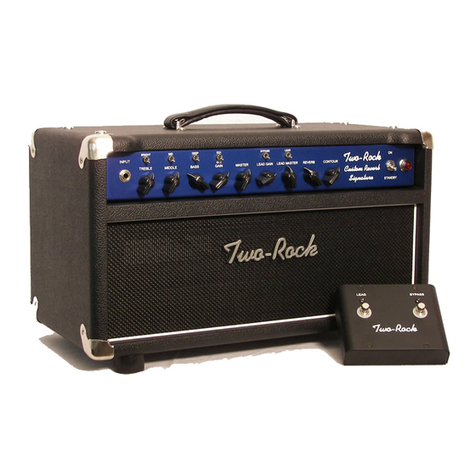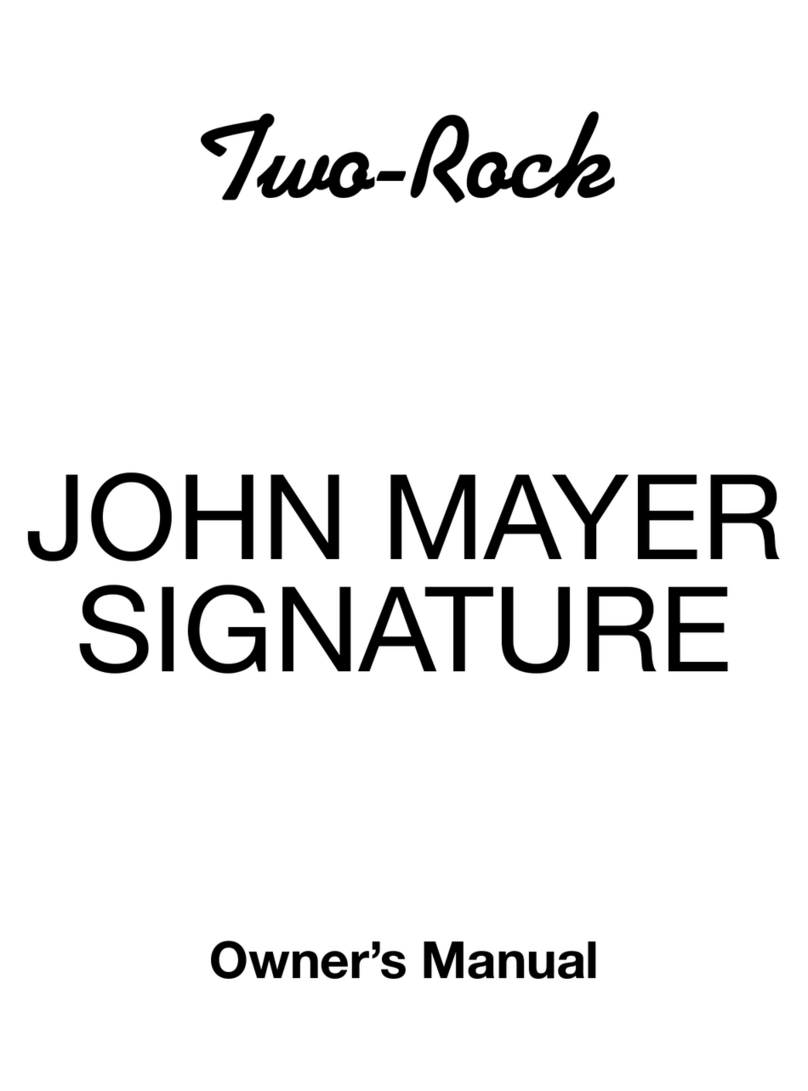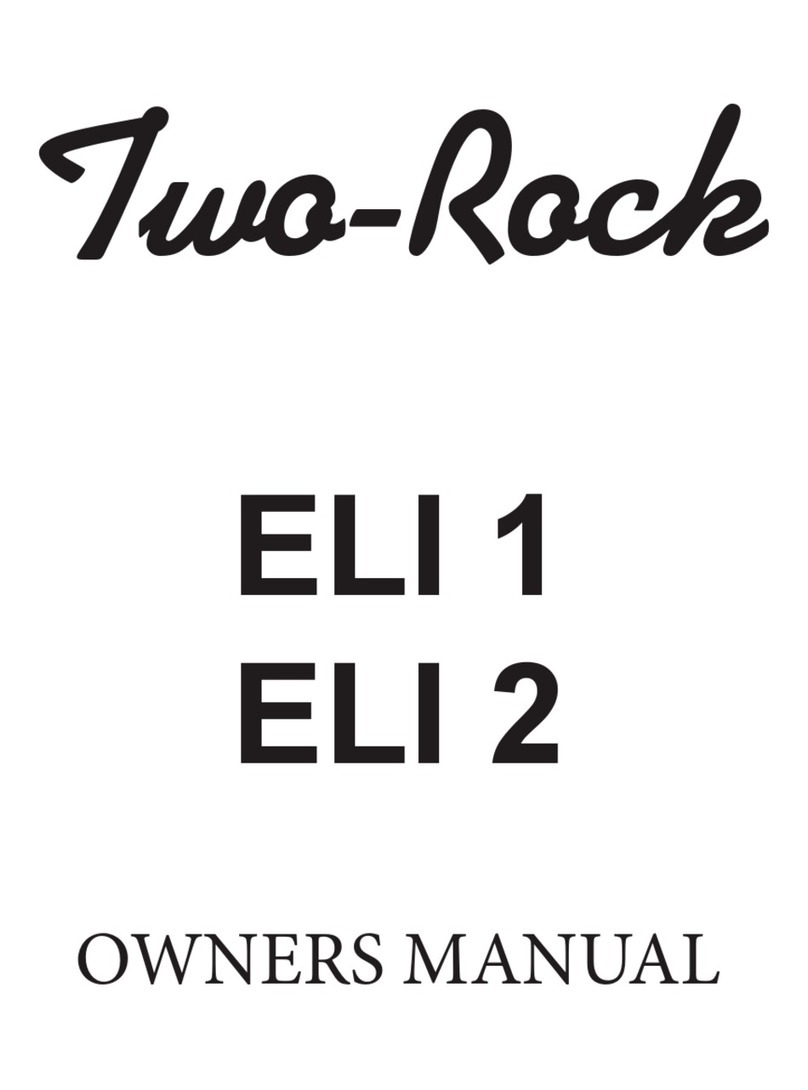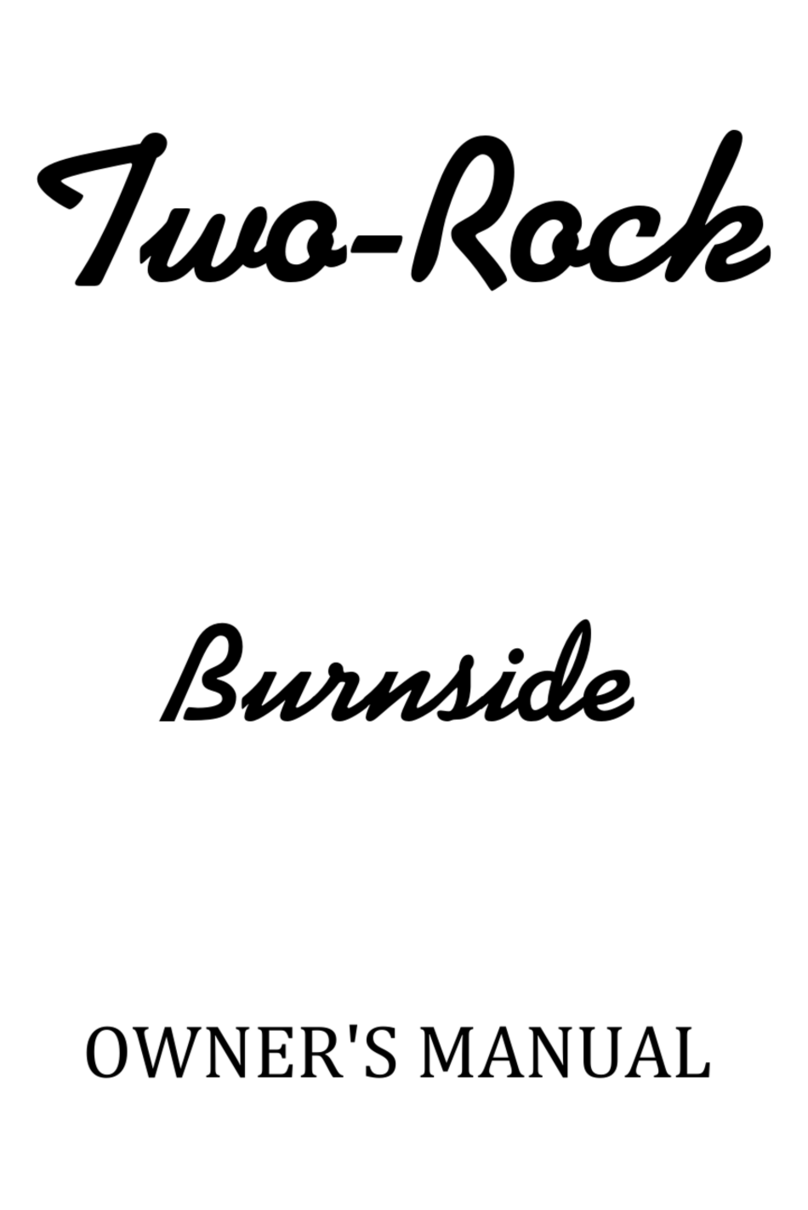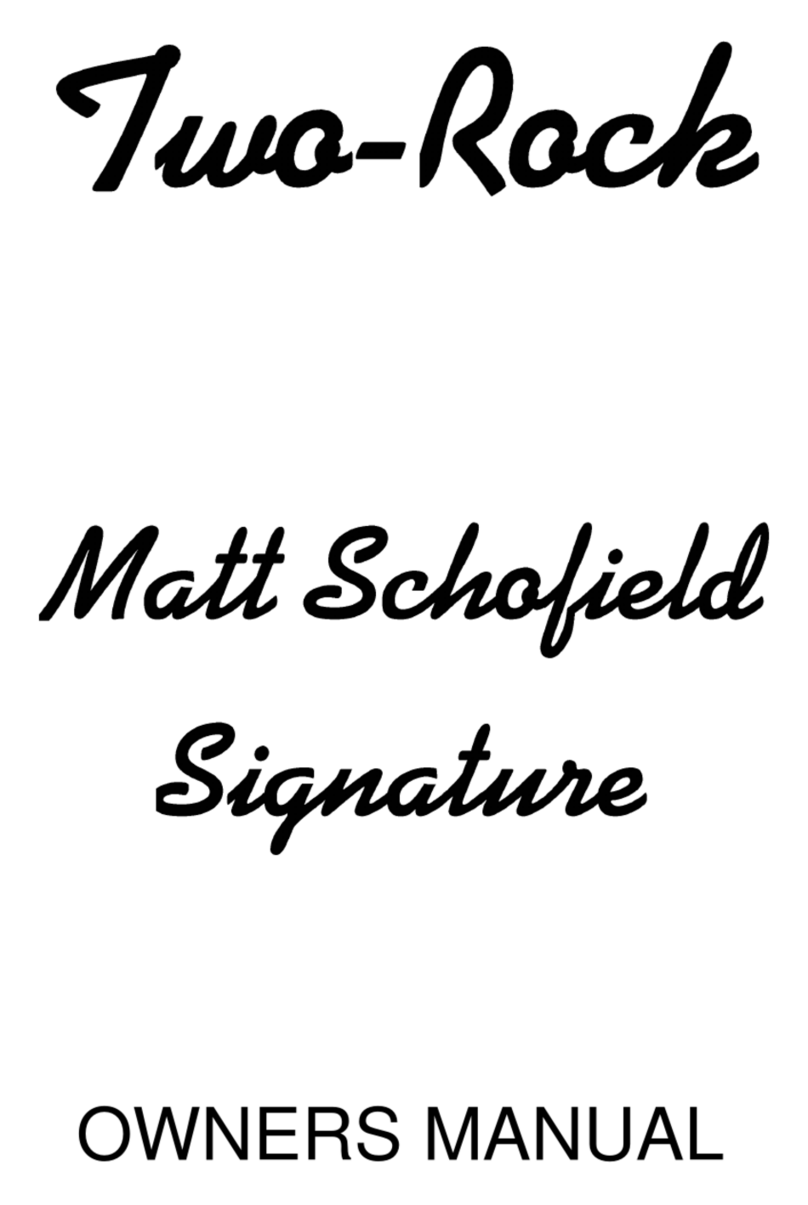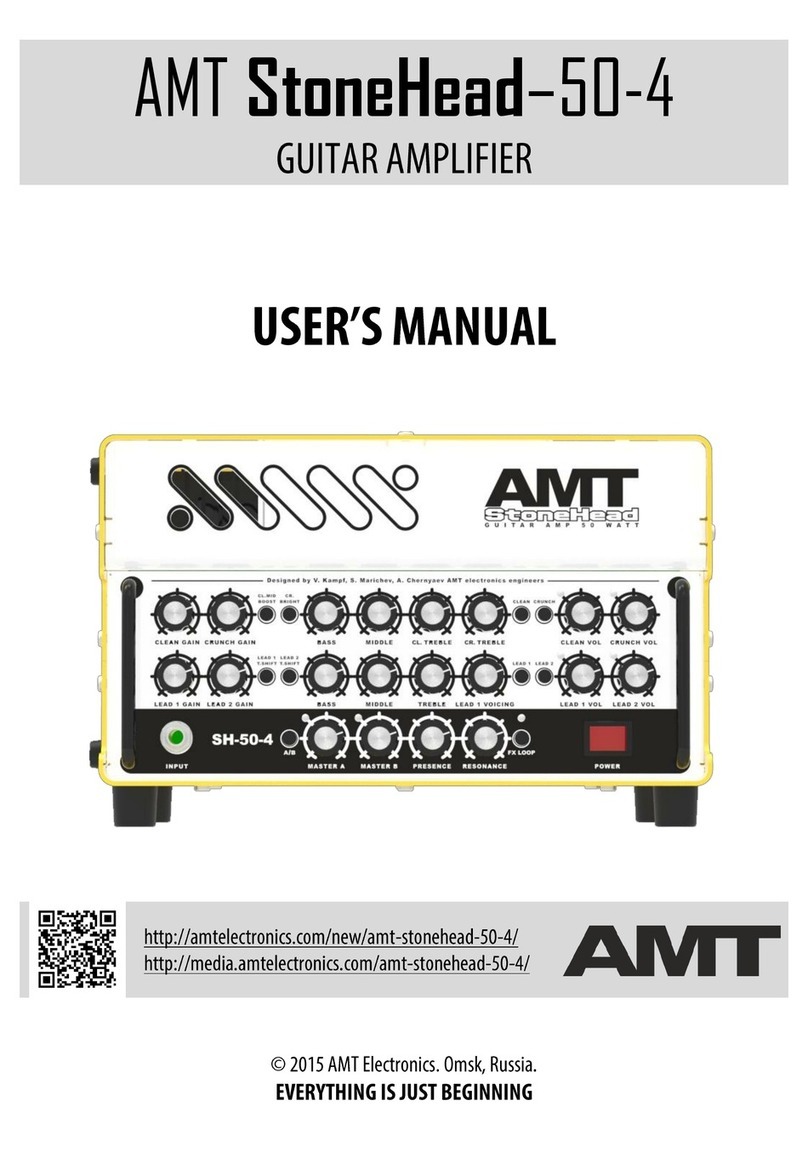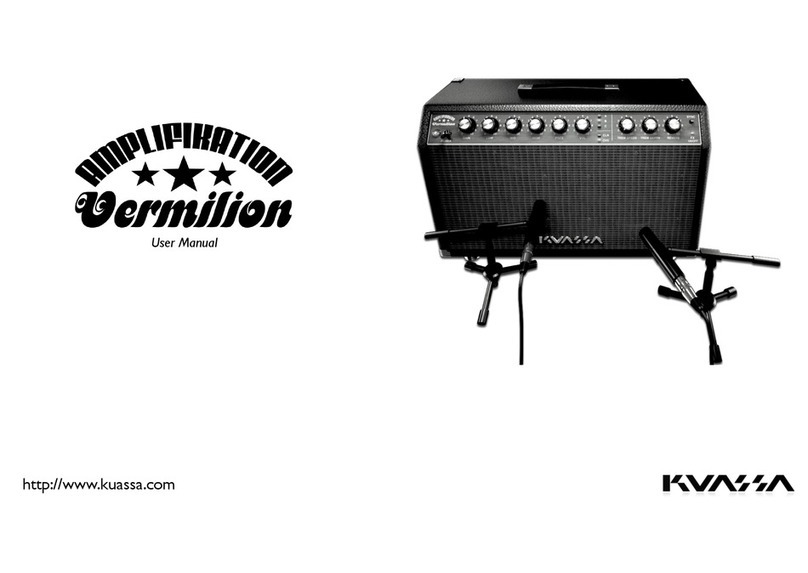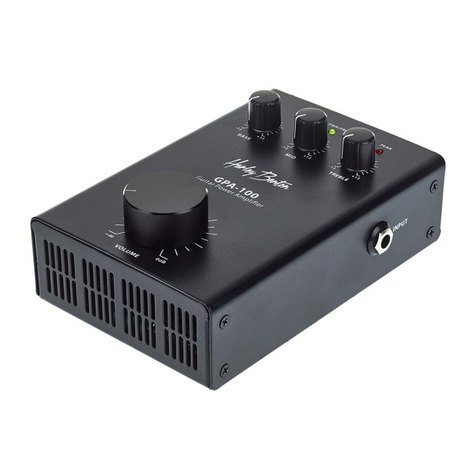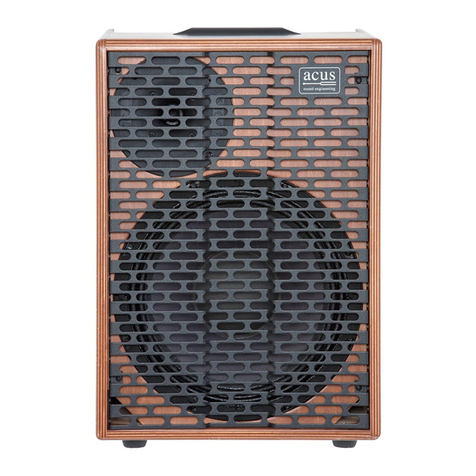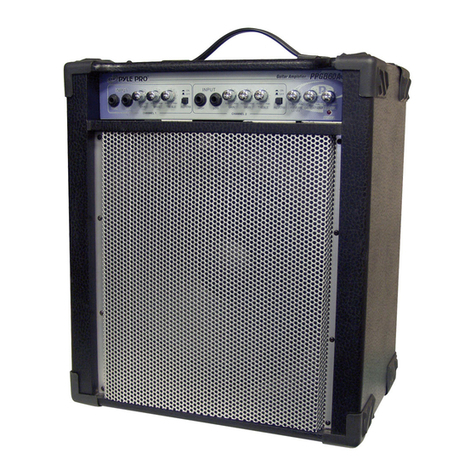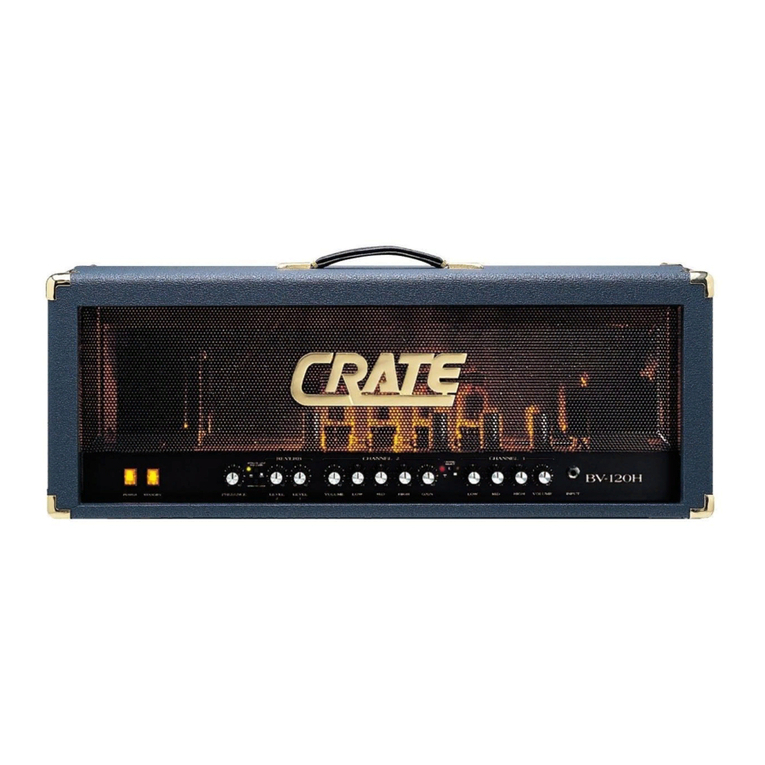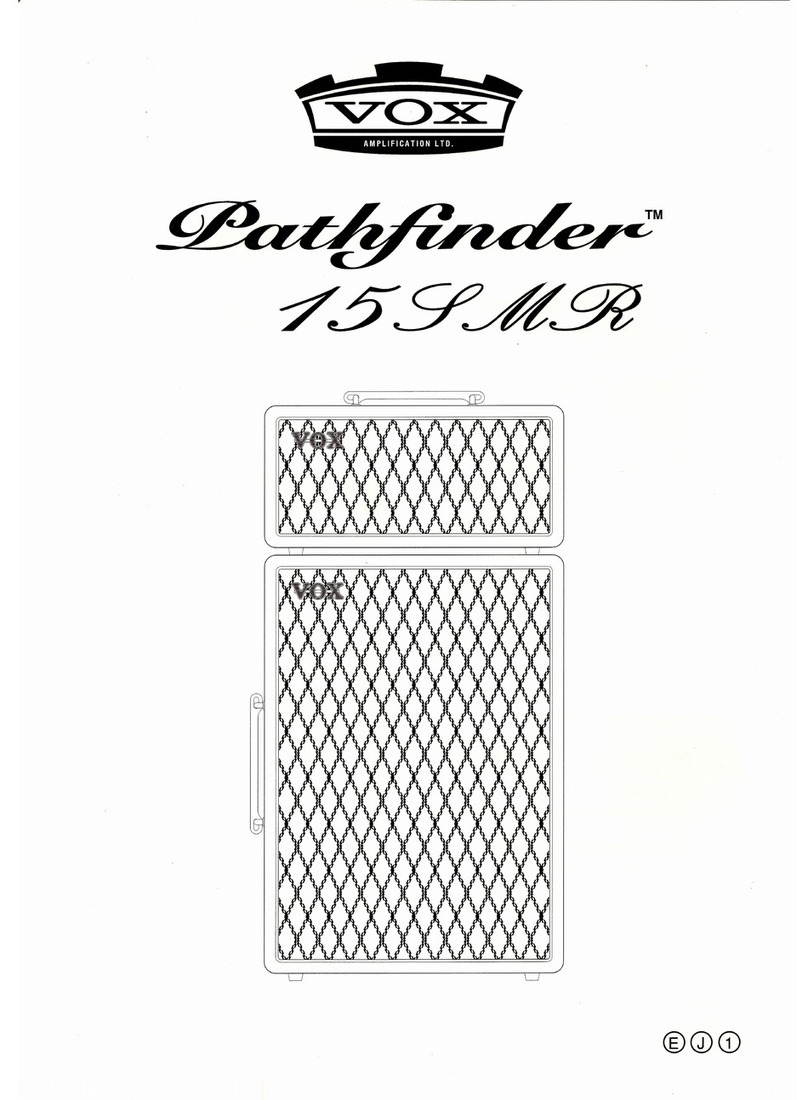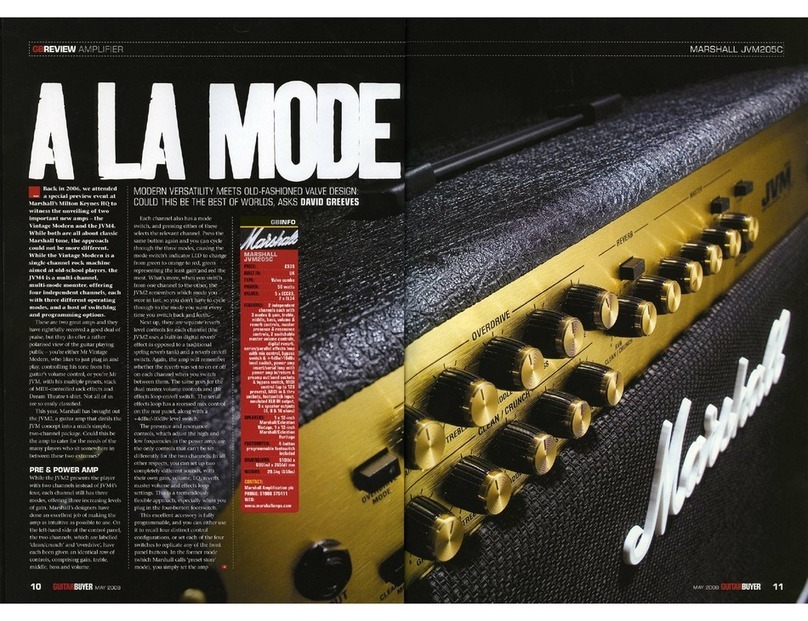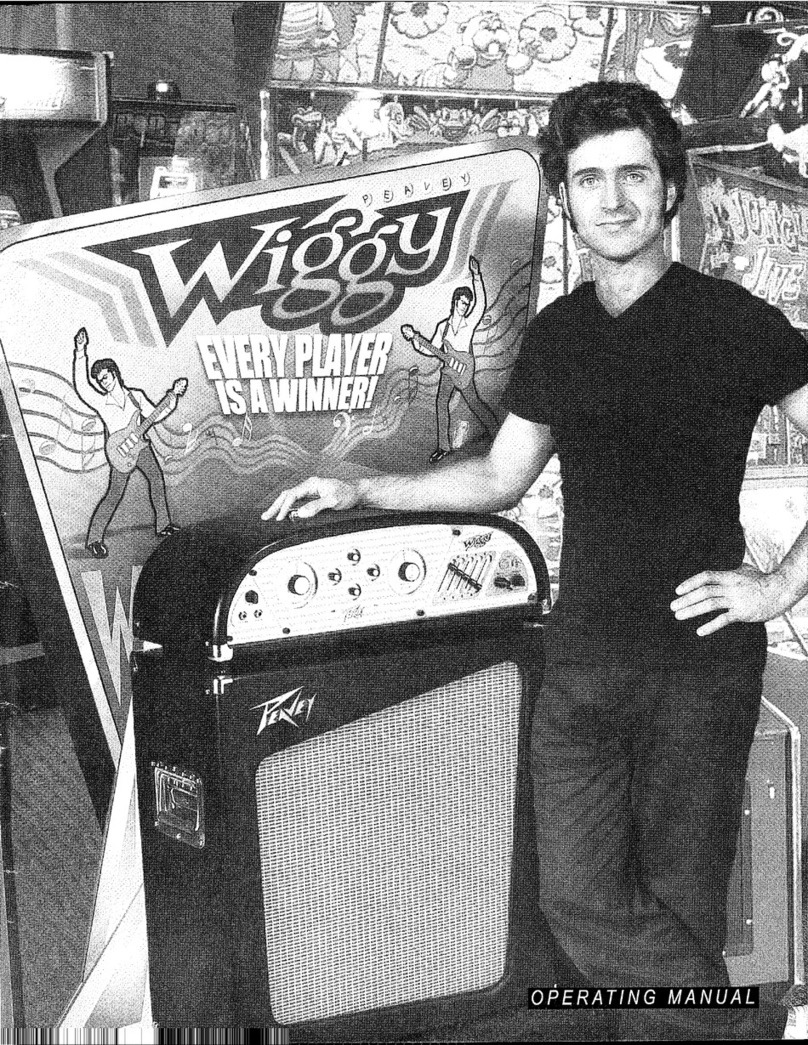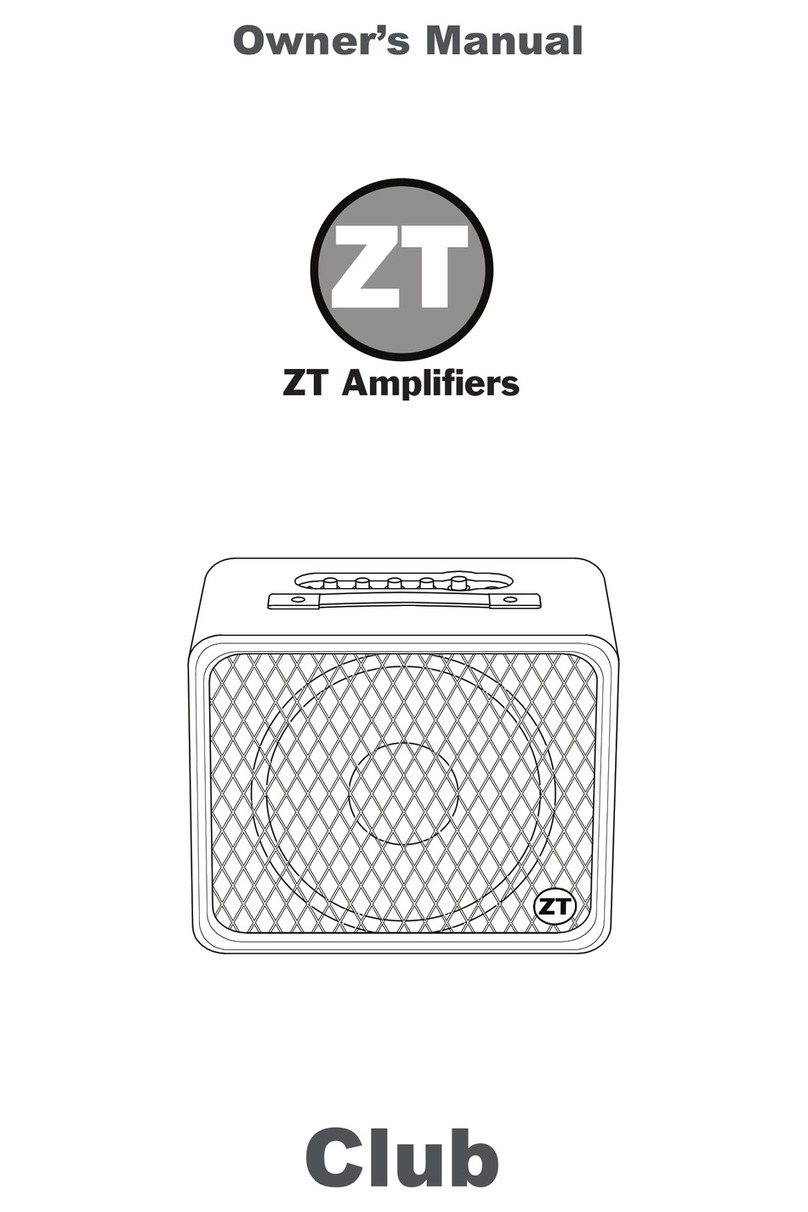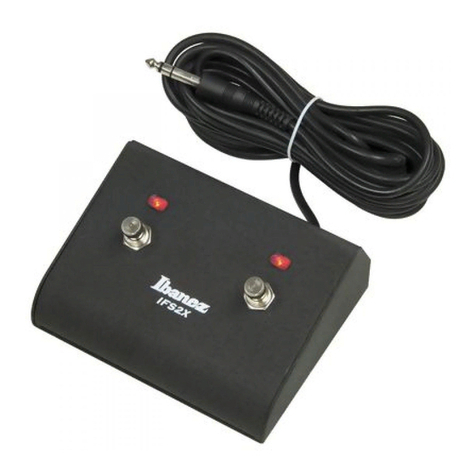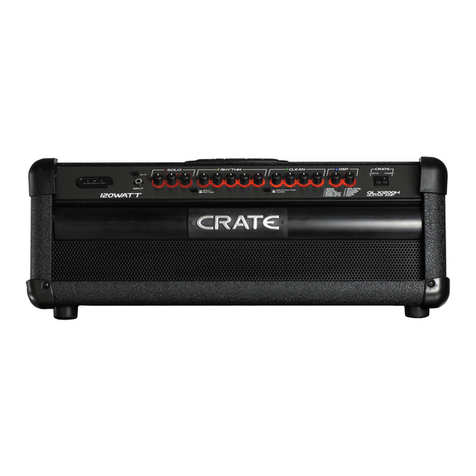HARMONIC TREMOLO - Unlike the bias tremolo which modulates the output volume, harmonic
tremolo modulates higher and lower frequencies separately at the same rate, but offset in phase
from one another. There is no actual change in overall volume or pitch, but the faux doppler-effect
created by the phase-shifting between high and low frequencies makes it sound like a mixture of
both. It is a very cool sound, and is entirely tube driven requiring three-and-a-half preamp tubes to
create this circuit. The addition of both tremolos, that can be used simultaneously or
independently, offers the player a myriad of tonal options.
SPEED –Adjusts the speed of the harmonic tremolo.
INTENSITY –Adjusts the effect and depth of the harmonic tremolo.
BIAS TREMOLO - Modulates the bias voltage of the amp’s power tubes. This produces a very
musical effect that does not get in the way of your playing even at higher settings of intensity.
SPEED –Adjusts the speed of the bias tremolo.
INTENSITY –Adjusts the effect and depth of the bias tremolo.
REVERB RETURN - The reverb return control mixes the reverb effect signal with the dry signal. At
full counterclockwise rotation, the reverb effect is defeated. By using the return control in
conjunction with the reverb send control, a wide range of natural reverb effects can be produced.
MASTER - Adjusts the overall output level of the amplifier. At lower settings on this control the
amp will be much cleaner sounding as well as lower in volume. As this control is turned up the
power section of the amp begins to work harder which increases sustain, fullness, and touch
dynamics as well as raising the volume of the amplifier. At higher settings on this control the power
section will be pushed into natural overdrive especially if the Gain control is set higher.
PRESENCE - Adjusts the contour of the high-frequency response. Turning this control up
gradually increases the intensity of the upper frequencies. This is a subtle control which can be
used to either emphasize sparkle and brightness when needed or smooth out your overall tone by
turning the control down.
STANDBY - This switch should be in the down/STANDBY position before you place the Power
switch to the up/ON position. After 20 seconds or more, place the Standby switch in the “up”
position to play the amplifier. When you are taking a break from playing the amp you can leave the
amp “powered up” and simply switch to the “stand-by” position to mute the output of the amplifier
and prolong power tube life.
INDICATOR LAMP - This lamp will illuminate when the rear panel power switch is in the “up”
position, indicating the unit is receiving A/C power.
NOTE: All switches are ON when in the “up” position
